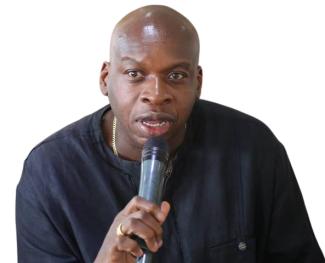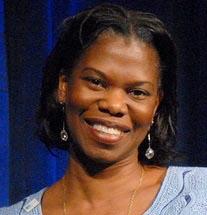Power to the people: Prospects for decentralised electrification in Sierra Leone
The aim of this project is to produce a Rapid Response Note for Sierra Leone’s Minister of Energy assessing what mix of regulatory mechanisms, incentives, and public-‐private partnerships would be required to facilitate and accelerate rollout of decentralized clean energy (e.g. mini-grid) electrification across Sierra Leone. Sierra Leone is a highly energy-‐deficient country. Prior to the commissioning of the Bumbuna hydropower generating facility, that at peak boosts capacity by 50MW, the capital Freetown and surrounding regions had access to only 15MW of power. Less than 1% of rural dwellers (where the majority of the population still lives) have access to electricity, 90% of the population relies on wood fuel for cooking, according to UNDP, which represents 97% of total energy consumption, according to FAO. To put this in context, Facebook’s data center in Oregon, USA has 28MW capacity.
We can view Sierra Leone's energy deficit through multiple lenses, including energy security, the environment (including climate burden); the health hazards and political instability associated with such a reliance on finite and rapidly diminishing forest resources for cooking; and the gender disparities associated with differential access to energy and the burdens on women for gathering firewood, being denied access to income generating opportunities, etc. Moreover, low access to power supplies acts as a brake on Sierra Leone's growth. In 2012, the consumer tariff for electricity was reported to be around 40.8 US cents/kWh while industry/large customers were reportedly charged 47.1 US cents/kWh. The Bumbuna hydropower plant was thought to make it possible to bring the unit cost down to 11 US cents/kWh. Meanwhile, those reliant on standby generators for power would spend around 50 US cents/kWh, crippling many businesses and consuming households’ disposable income.
Sierra Leone's grid does not extend very far beyond the capital and a few major cities. Thus the prospect for on-‐grid electricity for most of the country remains remote, at best. However, recent technological developments in decentralized (off-‐grid) technologies that incorporate renewable energy sources and innovative business models offer the prospect of hope that countries such as Sierra Leone can accelerate universal access to power for its population (a goal of the UN’s Sustainable Energy for All).
In exploring whether and how Sierra Leone can exploit this opportunity, there are several inter-‐related lines of enquiry that we shall need to pursue. (1) We need a better understanding of the government of Sierra Leone's (GoSL) vision, policy, strategy, and regulatory framework. In this regard, we need to understand those policies and regulations with a direct bearing on the energy sector, such as governance, tariffs, independent power provision, power purchase agreements, etc and those with a more indirect bearing, such as import tariffs on renewable energy components. We also need to understand the gaps between policies on paper and implementation in practice: are they bridgeable? Why do they exist? In this sense, we need to understand the “hard” and “soft” constraints around policymaking in the energy arena. (2) We need to make sense of the landscape of energy initiatives in Sierra Leone and understand where decentralized power provision fits in the grand scheme. Critically, how “joined up” are the initiatives and how can they be made to fit together? (3) We need to understand and factor in institutional realities and constraints. Can decentralization be an alternative to help overcome institutional constraints or is it vulnerable to capture by the same forces and contradictions? (4) What are the patterns of demand for energy and where might prioritized efforts be most optimal for growth (taking account of other initiatives)? (5) Which are the proven technologies and configurations that are relevant for decentralized power provision in Sierra Leone? (6) What viable business models are feasible in the Sierra Leone context and what are the policy enablers to enhance their viability? (7) What opportunities in decentralized renewable energy value chains exist for inclusive skills and jobs growth in the generation and provision of this energy form? (8) What investor appetite exists (in terms of both opportunity and risk)? What are the prime concerns, showstoppers, and enablers in this field from investors’ perspectives? What are some viable entry points and strategies for investors?
We do not feel that answers to all these questions are knowable in the abstract. Rather, we anticipate generating a set of hypotheses that can be tested through a manageable number of pilot initiatives enabled through a suitable alignment of GoSL policy and investor interest.
We shall interview key informants from the following sectors: (1) Policymakers, technical, and administrative specialists from the Ministries of Energy, Agriculture, Finance and Economic Development, and Trade and Industry. (2) Private sector energy users from agribusiness to small enterprises. (3) Local actors in Sierra Leone's embryonic renewable energy sector as well as sector specialists and experts. (4) International development partners. (5) Investors. (6) Representatives from the relevant Technical & Vocational Education & Training (TVET) sectors. (7) Media and civil society representatives with perspectives on the issue.
We anticipate a number of challenges in this assignment. First, an obvious one is the risk of policy coordination failures. While prime responsibility may lie with the Ministry of Energy, several other ministries have vital stakes in any energy consideration. Moreover, renewable energy is becoming something of a crowded field and while this may be welcome in principle, the challenge is to ensure that disparate projects all contribute to an overarching strategy the government has in place (or at very least do not pull in contradictory directions). In order to mitigate this risk, we shall attempt to initially cast the search net wide to build the “big picture” before narrowing down to the specific area of contribution. Second, a World Bank report has identified $28.1m a year in potential savings in the power sector if only organizational gaps that include generation and transmission losses, poor revenue collection, and unsustainable staffing could be plugged. We can ill-‐afford to discount the ability of vested interests to thwart a GoSL reform agenda to recover this $28.1m or introduce new energy strategies that excludes existing institutions. There are no easy risk mitigation strategies for working round a resilient and highly institutionalized system but we intend to take careful soundings to assess levels of political will and capital at stake.
The rough sequence of activities will be to conduct initial scoping discussions and interviews in early February; analyze initial findings and strategize around a focus based upon viable options and room for manoeuvre; conduct a second round of more in-‐depth, somewhat more technically-‐oriented interviews in March; collate findings, make recommendations, and produce final deliverables in April.
In practical terms, we intend to produce a final report containing actionable recommendations; an implementation framework; a draft Cabinet Paper; a Rapid Response Note; and a policy brief. We aim for recommendations to be prioritized, manageable, and actionable. Securing advance buy-‐in for them will be part of our work process, even though we anticipate helping to move thinking forward in this domain of policy and practice.
We believe there to be some interest among investors/independent power providers in entering the Sierra Leone market. Therefore, we hope the long-‐term impact of our contribution will be to help pave the way for these investments, perhaps initially through a handful of pilot initiatives.




